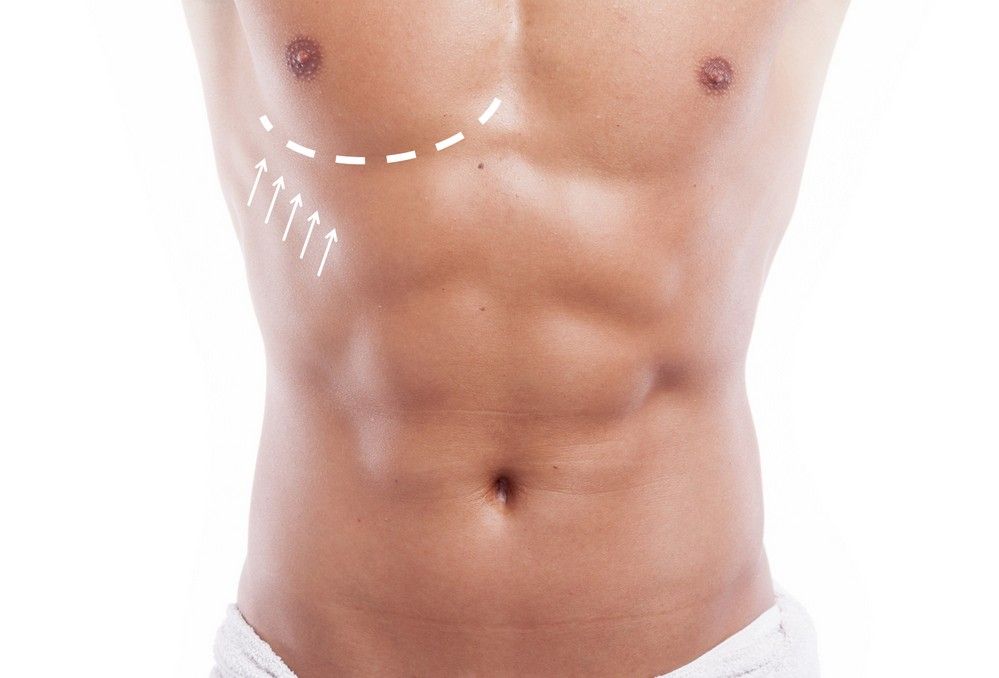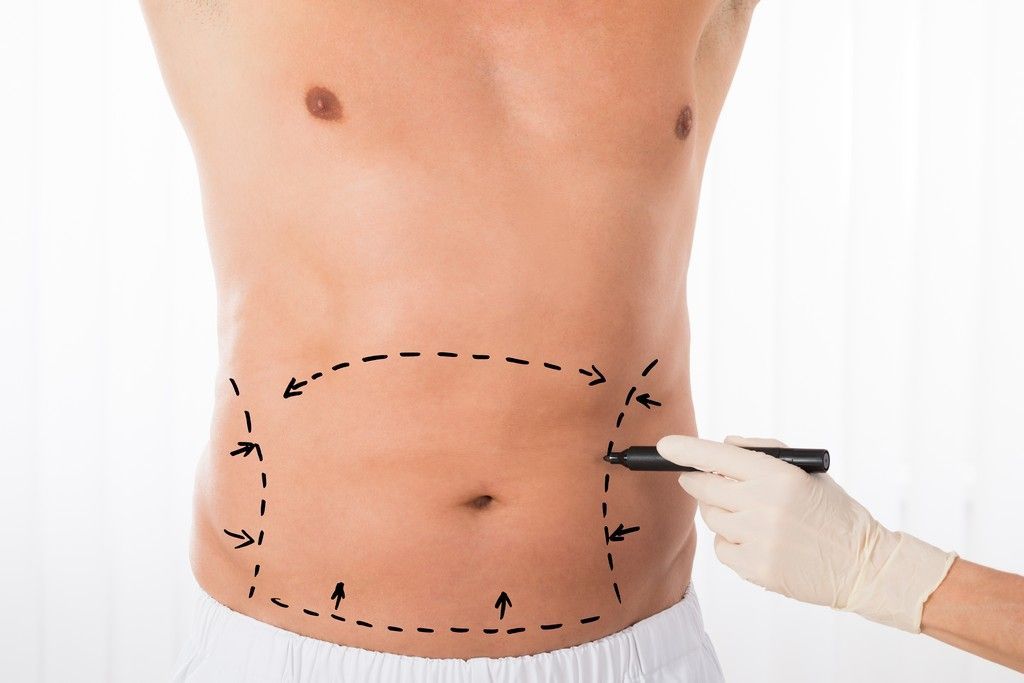Pectoral prostheses
English subtitled video
Many men want to increase the volume of their pectorals and because of their physical constitution they can’t achieve it no matter how much they go to the gym. In this case they went to Clínica Sanza in Barcelona to get pectoral prostheses. These implants are made of a material that does not cause an immunological reaction and integrates with the tissues in a natural way.
It is a type of plastic surgery operation for life, its result does not disappear over the years. Our plastic surgeons at Clínica Sanza, with more than 30 years dedicated exclusively to plastic surgery, advise the patient on what would be best in their case, what would be the correct volume for their physical constitution, taking into account that the last word is the patient’s.
Book a visit
You can do it in 3 ways:
– Free on-site visit: Call +34 932066540 from Monday to Thursday from 9:00 am to 6:00 pm and Friday from 9:00 am to 3:00 pm.
– Free on-site visit with IMMEDIATE booking: For booking outside office hours. We charge 60 € on your card to avoid false bookings. It is refunded on the day you come to the consultation.
– ONLINE Visit: Video conference using whatsapp or Zoom. Cost of 60 € non-refundable. When booking indicate in the comments that you want videoconferencing and not on-site.
WHERE DO WE OPERATE?
At Clínica Sanza we rely on the Sagrat Cor Hospital, part of the Quirónsalud group, to perform our surgical procedures.
Its prestige, facilities, medical and healthcare staff, as well as its technology are a guarantee.
BARCELONA: A HEALTH HUB
Do you want to know why it is worth coming to Barcelona for plastic surgery and why so many people come from abroad?
WE ORGANIZE EVERYTHING FOR YOU
Your trip, your flight, your operation, your transfer and your hotel with our support agency. We work with the best travel agencies worldwide.
PATIENT PROFILE
Men who wish to quickly and effectively increase the pectoral area.
People with pectoral malformations such as Poland’s syndrome or similar.
PROCEDURE
After an initial evaluation, the type of prosthesis and the volume that best suits the patient’s wishes will be defined.
The implant is placed axillary and in retromuscular plane. Once the implant is placed, the incision is sutured and drains are placed, which are removed after one or two days.
DURATION OF THE INTERVENTION
- 1 to 2 hours
PROTOCOL
Preoperative
- Evaluation of the area to determine the adequacy of the treatment.
- Follow specific guidelines determined by the doctor
- CBC and tests on cardiac and respiratory status
Anesthesia
- Local and sedation, or general
Hospitalization
- 24 h admission
Postoperative
- Drainage and compressive bandage
- Drainage and bandage removal after 24 to 48 hours
- Removal of stitches within 7 to 10 days
- Special girdle for 1 month
- Medication if required
- Mandatory check-ups after a few days, a few weeks and a few months, according to prescription
Convalescence
- Immediate normal activity without forced movements
- Physical exercise one month after surgery
- Progressive recovery of zone sensitivity
RESULTS
- Rejuvenated appearance and enhanced pectoral projection
- Improvement of the patient’s psychological profile and self-esteem.
DEGREE OF DIFFICULTY
- Medium intervention
LEVEL OF RISK
- Low-medium
- Risks inherent to the procedure: asymmetry or rejection of prostheses that require repositioning
- Risks of any operation: bleeding, infection, impaired healing
BEFORE/AFTER PHOTOS
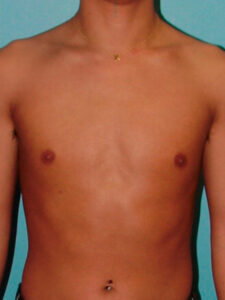
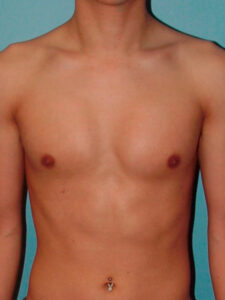
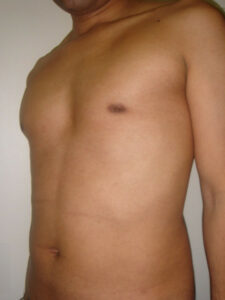
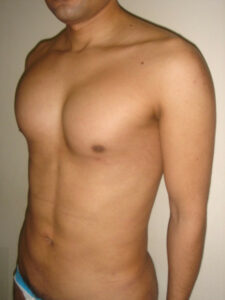
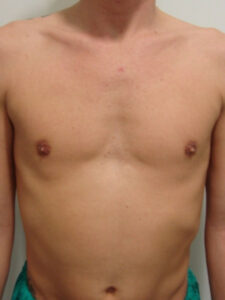
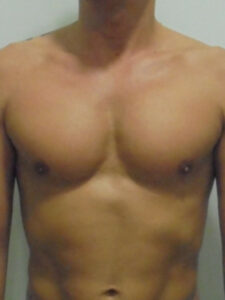
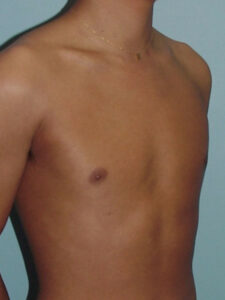
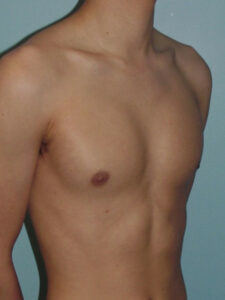
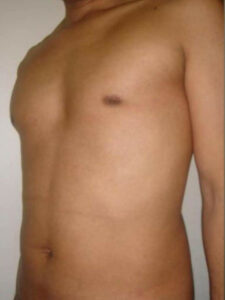

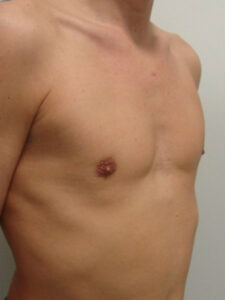

Biceps prosthesis operation video
If you want to see how a real biceps prosthesis operation is performed, this is your video. It has been filmed in fast motion because the actual operation takes more than 1 hour. It is a complete film, showing from the time the anesthesia is administered, through the scalpel cuts, placement of the biceps prostheses, until the patient is sutured and bandaged.
NOTICE
This is a video of a real operation, we warn that it may cause impression and hurt the sensibility of some people.
Whatever your case may be, do not hesitate to contact us.
Sanza Clinic in Barcelona, quality of service
Frequently asked questions about pectoral prosthesis surgery
What is pectoral implant surgery?
Well-proportioned body muscles are a symbol of masculinity. Some people have poor muscle development or defective pectoral muscle development, even if they do a lot of pectoral gymnastics. In these patients, as well as patients with mild thoracic deformities such as pectum excavatum and congenital absence of pectoral muscles, the placement of pectoral implants may be useful to correct these deformities.
What is the pectoral implant procedure like?
In Clinica Sanza we perform a surgical approach by means of an axillary incision through which the implant is introduced and placed in a pocket behind the pectoral muscle. The scar will be hidden in the axillary area. Similar to the placement of breast prostheses, but with prostheses shaped like the pectoralis major muscle.
What material are pectoral implants made of?
Pectoral implants are made of a silicone compound. Its consistency is soft and smooth to the touch, but provides similar firmness to that of the exercised muscle. It is a more cohesive gel than breast prostheses.
What can I expect postoperatively?
After surgery the patient may feel some discomfort with mild pain. These discomforts are controlled by the use of analgesics and anti-inflammatory drugs. You must wear a bandage or a girdle for 2-3 weeks so that the prosthesis is well adapted to the muscle.
What type of anesthesia is used in pectoral implant surgery?
Surgery for the placement of pectoral implants is performed under local anesthesia and sedation. This means that the patient will remain asleep during the procedure, absolutely calm, and will not perceive any painful stimuli.
What is the duration of the intervention? Is hospitalization necessary?
The procedure lasts 1-2 hours. It is on an outpatient basis unless the patient requires otherwise and prefers to remain in the hospital for 1 day.
What are the results?
Very natural and very beautiful. A gym-like pectoralis muscle is observed.





